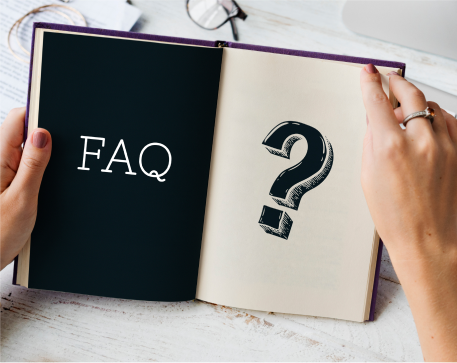Ready to learn?
Take the first step toward achieving your educational goals. Whether you’re preparing for exams or expanding your knowledge, getting started is just a click away. Join us today and unlock your full potential
832, utkarsh bhawan, near mandap restaurant, 9th chopasani road, jodhpur rajasthan - 342003
support@utkarsh.com
+91-9116691119
Support
Learning Resources
Rajasthan Govt Exams
Central Govt Exams
Civil Services Exams
Nursing Exams
School Tuitions
Other State Govt Exams
Agriculture Exams
College Entrance Exams
Miscellaneous Exams

© 2025 Utkarsh Classes & Edutech Pvt. Ltd. All Rights Reserved
Home
International Current Affairs
Art & Culture
UNESCO recognises Ramcharitmanas, Panchatantra and Sahṛdayāloka-Locana

Utkarsh Classes
Updated: 14 May 2024
3 Min Read

Ramcharitmanas, Panchatantra and Sahṛdayāloka-Locana of India is among 20 items of the Asia Pacific region which has been included in the 2024 cycle of the ‘UNESCO's Memory of the World Asia-Pacific Regional Register’.
The Memory of the World Asia Pacific Committee recognises and honours the Asia-Pacific achievements in genealogy, literature, and science, among other categories.
The decision to include Ramcharitmanas, Panchatantra and Sahṛdayāloka-Locana was taken at the 10th General Meeting of the Memory of the World Committee for Asia and the Pacific (MOWCAP) ,held from 7 and 8 May, in Ulaanbaatar, capital of Mongolia.
The 10th General Meeting of MOWCAP was hosted by the Mongolian government's Ministry of Culture, the Mongolian National Commission for UNESCO, and the Bangkok Regional Office of UNESCO.
The meeting was attended by 38 representatives from member states convened alongside 40 observers and nominees.
Ramcharitmanas was written by Tulsidas in the 16th century A.D in the Awadhi dialect. It is different from Ramanaya which was written by Sage Valmiki in Sanskrit language. The Ramcharitmanas is written in Chaupai form.
Panchatantra is one of the oldest collections of fables in the world, composed in Sanskrit. Vishnusharma, the court scholar of King Amar Shakti of Mahilaropya, is credited with compiling it.
It was probably composed around 300 BCE. It was translated into Pahlavi (Iranian language)in 550 BCE.
'Sahṛdayaloka-Locana' has been composed by Acharya Anandvardhan in Sanskrit. He lived in Kashmir during the second half of the 10th century and the first half of the 11th century AD.
The 20 Asia Pacific inscribed items are as follows:
|
Serial Number |
Inscribed Item |
Country |
|
1 |
Funafuti: The Edgeworth David 1897 Expedition Documents |
Australia and Tuvalu |
|
2 |
Sultana’s Dream- by Rokeya S. Hossain |
Bangladesh |
|
3 |
Archives Relating to the Chengdu Traditional Teahouses |
China |
|
4 |
Huizhou Genealogy Archives |
China |
|
5 |
Printing Blocks Housed at the Derge Printing House |
China |
|
6 |
The Illustrated Manuscripts of Rāmacaritamānasa of Tulasīdāsa |
India |
|
7 |
The Manuscript of the Sahṛdayāloka-Locana: Seminal Text of Indian Poetics |
India |
|
8 |
The 15th Century Manuscript of the Pañcatantra Fables |
India |
|
9 |
Indarung I, The First Cement Plant in Southeast Asia (1910-1972) |
Indonesia |
|
10 |
Indonesian Sugar Research Institute’s Archives 1887-1986: The Role of ISRI’s Research Activities to the World Sugar Industry |
Indonesia |
|
11 |
The Tambo Tuanku Imam Bonjol Manuscript |
Indonesia |
|
12 |
Al-Tarikh Salasilah Negeri Kedah: Genealogical History of Kedah State |
Malaysia |
|
13 |
The Royal Correspondence of Baginda Omar (Surat Persendirian Baginda Omar) |
Malaysia |
|
14 |
Family Chart of Hereditary Lords of the Khalkha Mongols, the House of Genghis Khan |
Mongolia |
|
15 |
Mongolia’s First Postage Stamps ‘Eldev Ochir’ |
Mongolia |
|
16 |
Doctrina Christiana en Lengua Española y Tagala (Christian Doctrine in Spanish and Tagalog), Manila, 1593 |
Philippines |
|
17 |
Hinilawod Epic Chant Recordings |
Philippines |
|
18 |
Images of Khorezm Oasis by Khudaibergan Devanov (1879-1937) |
Uzbekistan |
|
19 |
Turkestan Album” 1871-1872 |
Uzbekistan |
|
20 |
Bas-reliefs on the Nine Bronze Urns in Huế Imperial Palace |
Vietnam |
The United Nations Educational, Scientific and Cultural Organisation (UNESCO) was founded in 1945 as a specialised agency of the United Nations.
The six main areas of UNESCO programmes are education, natural sciences, ocean sciences, social and human sciences, culture, and communication and information.
It was set up on 16 November 1945.
Members: It has 194 Members and 12 Associate Members (as per the UNESCO site).
Headquarters: Paris, France
Director General: Audrey Azoulay (France)
Top Posts
Popular Tags

1-Liner PDFs FREE !
Kumar Gaurav Sir ki Class PDF aur Daily One-Liner CA – Bilkul Free! Rozana preparation ko banaye aur bhi Damdaar!
Frequently asked questions

Still have questions?
Can't find the answer you're looking for? Please contact our friendly team.
Visit an Offline Centre Near to You.